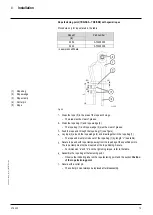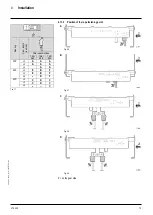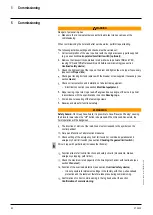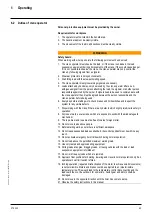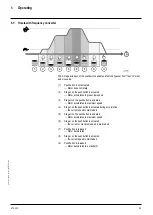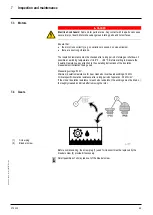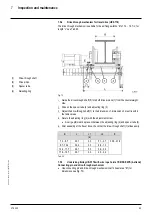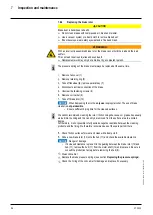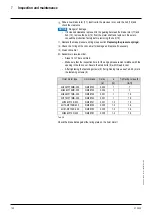
7
Inspection and maintenance
07.2020
87
ba
-o
.2
.6
.0
-us
-3
.2
-ys
|
A1
18
67
50
1 Re
v A
E
7.1
Inspection intervals
Fig. 66
Test e
ve
ry day
befo
re sta
rting
work *1
Pe
riodi
c
in
sp
ect
ion
ev
ery 12
month
s
*2
Inspection table
see page
●
●
Function of brakes (1) with regard to braking efficiency and activation
●
●
Functional test of the hoist limit switch:
•
Operational hoist limit switch, if available.
•
Emergency hoist limit switch (2), if no operational hoist limit switch available.
•
Hook operated hoist limit switch, if this is present as an option.
●
●
Emergency stop, travel limit switches, crane switch
●
●
Rope (4)
●
●
Check state of system for obvious defects
●
Check suspension of control pendant (cable and steel wire must be correctly
attached)
●
Load hook (5), cracks, distortion, wear, corrosion, function of hook safety latch
●
Overload safety device (6)
●
Disconnect switch and main isolator
●
PE connections and equipotential bonding
●
Establish remaining service life
●
Rope attachment (10) and rope sheaves
●
Rope guide (11)
●
Drive parts (12), wheel flanges, wheels etc.
●
Bolt joints, welds
●
End stops, buffers
●
Safety clearances
●
Power supply cable
●
Cable glands
●
Towing arm
●
Switching functions
●
All parts in the power flux
*1 By user
Periodic inspections including maintenance at least every 12 months, possibly more
frequently if so prescribed by national regulations, to be performed by a qualified person.
*2 Heavy duty or unfavorable conditions (dirt, solvents, multi-shift operation, etc.)
entail a reduction of this inspection and maintenance interval.
WARNING
Safety hazard.
If work needs to be carried out on live parts, a second person must be
present who can stop dangerous movements in an emergency by means of the
emergency stop or disconnect the power supply by means of the main isolator /
disconnect switch.
W0789
12
5
4
12
1
12
12
W0791

